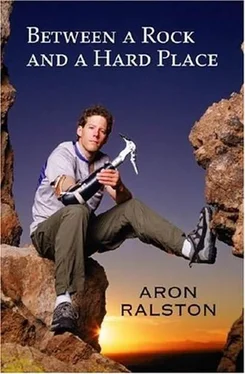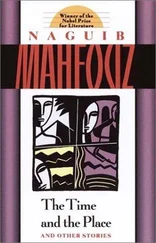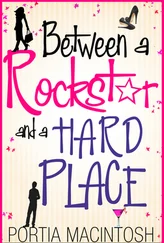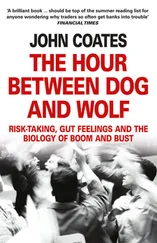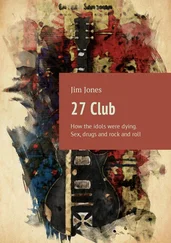Still drinking my third liter, I get out my folded guidebook photocopy and measure the distance to the first landmark on my journey, the confluence of Blue John with Horseshoe Canyon. The map is delineated in kilometers, and doing the conversion I estimate it’s a solid two miles from where I’m sitting to the confluence. After that, a short half mile will bring me to the boundary of Canyonlands, and two miles after that, I’ll pass the Great Gallery, which the caption under the photo on the left side of my photocopy describes as “probably the best [pictograph panel] in the world.” Another three quarters of a mile, or maybe a mile, and I will come to the first water seep in the Barrier Creek drainage. That means it will be at least two hours until I get to the next place that could possibly have water. I don’t know for sure if there will be anything there-it will depend on the water table and any rains that came the week before I arrived in Utah-but I’ll need water by then, whether it’s there or not.
The best I can do to prepare for the coming march is fill my CamelBak and Nalgene and seal them closed. I’m as ready as I’ll ever be. I stand up and feel the water sloshing in my stomach. I wish I could rest and let the water enter my system, but I’m slowly bleeding out, and I have three, maybe four hours to go from here. I made my choice an hour and forty-five minutes ago when I cut into my arm. Now I resolve to follow that choice through to its conclusion-reaching my truck and then getting to a clinic or, failing that, a phone.
Marching into the wide-open, sunny, sandy canyon bottom, I start my eight-mile trek. The heat instantly saps what little rehydration I accomplished at the pool, and within two hundred yards, I have to take a sip of water. After going through the rigmarole of digging my Nalgene out of my pack, I take my last remaining nonlocking carabiner off my harness’s gear loop and clip the gate through the bottle’s cap loop, then snap the metal link onto a strap hanging off the left side of my backpack’s padded waist belt.
Continuing on, I walk past several large cottonwoods and a thicket of tamarisks that testify to the substantial runoff that passes through this part of the canyon. In another hundred yards, the brush subsides. I tire of walking in my harness, with the belay device and daisy chain dangling in front of my thighs, so I tear the belt back through the safety ring and wiggle my legs out of their loops one at a time until the harness and the attached accoutrements drop behind me to lie in the sand like a pile of dead snakes. “That’ll be someone else’s little score,” I think, “some fine canyoneering booty, that.” Through the first meanders of the canyon, I find myself crossing the fifty-yard-wide floor to take advantage of the shade at the edges of the wash, but still, the effort of walking at even a moderate pace leaves me parched within a minute of sipping at my water. After a single mile, I’m as thoroughly dried up as I was at the top of the rappel, and I’ve already drunk a full liter, a third of my water supply.
Not ten minutes after leaving the puddle, my bowels wake up for the first time since Saturday morning. I know what’s coming, and I know it’s coming quick. I rush over to an alcove along the edge of the wash where the occasional flood action has carved out a bench on the outside curve of the stream course, and hurry to undo the belt on my shorts. I strip down my three layers of shorts, biking shorts, and underwear just in time as I desecrate the slickrock. The water I’ve drunk has spilled over out of my stomach and flooded my bowels.
Oh, dude! Jeezus! That’s horrendous, man!
As if I weren’t in enough distress already, now I have to try and clean myself up. It’s pointless to try to wipe; I have nothing except my clothes, and I kind of need those. I pull up my underwear but take off the biking shorts and stuff them in the top of my backpack. I put my tan-and-blood-colored shorts back on and feel ten degrees cooler without the black padded shorts. No time to dwell; the episode is past.
Hiking again, just before the canyon swerves to the right in a sweeping gooseneck bend, I take a left into a side canyon, thinking it to be the main drainage, but within forty steps, I feel an added strain on my debilitated system and realize that I’m actually walking upgrade and turn around.
No stupid mistakes, Aron. Pay attention here. You knew this wasn’t Horseshoe Canyon. It’ll be obvious when you get there. Keep track with your map. You know how to do this.
Suddenly, I feel a wetness spreading across my lower back. My CamelBak is leaking. I stop and drop to my knees, swinging my backpack around to the front. Sure enough, the bite valve is leaking water out of the bottom of the CamelBak. It’s not designed to hold back pressure at the bottom of the reservoir, and since I sliced away the tubing that would usually connect there, I have a problem. I open my empty Nalgene and squeeze the bite valve into its mouth, pouring half the remaining contents of the reservoir into the bottle. “Now what?” I wonder. If I leave the water in the CamelBak, it’ll leak out and be gone before I get to Horseshoe. I screw the lid back on the Nalgene, clip it on my backpack strap, and decide the best thing I can do now is drink the rest of the water in my CamelBak and go the rest of the way on what’s in the Nalgene. It’s not ideal, but it’s better than wasting the water.
Now my new reality sets in. I have drunk five liters of water in under an hour and covered only a mile of the canyon. I have one liter of water left, six miles to go, it’s only going to get hotter, and I’m only going to get weaker. I have to figure out a better way to do this, or I’ll be dead before I get halfway to the Great Gallery. A memory comes to mind, a story I read in a running magazine maybe a few years ago, about the legendary Mexican Indian tribe of the Tarahumara. I remember being impressed not just that the tribesmen would run distances of fifty miles in a day, often in their bare feet, and through the heat of the desert, but that they would undertake these ultramarathons without any support-they wouldn’t even carry any food or water. Their trick was to take in a mouthful of water at the start, not swallowing it but rather carrying it in their mouth, allowing that single swallow to humidify the air going into their lungs. As long as they kept their pace below their sweating threshold, they would lose only the humidification that they exhaled. I decide it’s worth a shot and take two ounces of water in my mouth and hold it there while I walk myself closer, yard by yard, to my truck hidden somewhere up on the tablelands to the north.
I immediately sense that the trick is working. Although I’m still thirsty, I’m breathing well and don’t feel a tenth as parched as I did when I was drinking the water outright. This might just help me conserve the rest of my water supply.
At mile two of my march, at 1:09 P.M., I come to the confluence of Blue John and Horseshoe canyons and take a left toward the Great Gallery without missing a stride. However, in another five minutes, the sand in my left shoe builds up enough that I decide to stop and take it off. It’s been grating my sole raw, and I can’t stand it anymore. My left foot is much worse off than my right because I left the tatters of my left sock at the chockstone, stretched over the hammer rock’s top. Getting my shoe off and emptying it are the easy parts. I still cannot tie the laces, so I pull them tight and tuck the loose ends into the sides of my shoe next to my bare foot. Good enough. From here forward, I am as diligent with my steps as I can be to avoid the sand, both for ease of travel and to avoid getting more grit in my shoe.
At mile two and a half, I come across a barbed-wire fence hanging across the wash, suspended by burly cables sunk into the rock on either side of the streambed. This must be the boundary for the national park, I figure, as I duck through a cutaway section in the middle of the fence where the boards are loose at the bottom. Right after I step through the fence line into the Horseshoe Canyon District of Canyonlands, my bowels start shouting, and my sphincter clenches. I charge over to a suitable spot in the shade of another shelf where I can lean and purge my intestines. Diarrhea won’t usurp blood loss as the primary threat to my life, but if it keeps up, it could dehydrate me even more. Round two over, I hike up my plaid boxers and shorts and march onward. The water trick continues to help me hike briskly while minimizing my intake. I swallow every five or ten minutes, but the good news is that I still have over twenty ounces left in my Nalgene.
Читать дальше
